THE WOUNDS from his fight with a baboon weren’t fully healed when Bismark charged the Cape buffalo.
We had spent the day trying to split two satellite bulls from the herd. I had been hired to photograph a plains- and dangerous-game safari in South Africa’s northernmost province of Limpopo, and I was shooting through my telephoto lens as one of the two bulls broke from cover and charged.
The hunter shot the buff at 40 yards, then again. Bismark, a wire-haired Jack Russell, stood at heel beside his handler, professional hunter Divan Human. I don’t know how many shots were fired—both by the hunter and the PH—as the buffalo thundered to 15 yards, but it wasn’t dying. That’s when Bismark broke heel and tried to ride it.
As a lifelong hunter, I’ve seen bayed bears and treed mountain lions. As a nuisance wildlife professional, I’ve pulled badgers out of holes and I’ve been face to face with rattlesnakes that were living under houses. Nothing compares to that Cape buffalo charge. They’re called “black death” in South Africa, and I get that now. But the heart of a terrier is unmatched, and Bismark was ready to die for us.
Bismark is unshakable, but he’s no one-hit wonder. I saw a dozen blood-tracking dogs while I was on safari this spring; every one was a Jack Russell. The breed was first developed in Britain for fox hunting, and its prevalence in South Africa today is a byproduct of British colonialism. Although I didn’t see any on my trip, Jagd terriers (“jagd” is German for “hunt”) are also popular among South African outfitters.
The cool thing about terriers is they can do a little bit of everything. I’ve owned Jagds for nearly a decade and they’re integral to my nuisance wildlife business in the Southwest. Although it’s no longer commonplace in the U.S., terriers were originally bred for this work. They excel at finding dead animals, locating live ones, and catching critters. Because of all that tenacity packed into a small body, they also have a tendency to get hurt on the job. (As the Jack Russell Terrier Club of South Africa puts it, the “real Jack Russell terrier does not sit on the sidelines of life.”) While PHs here release their dogs on most game, they don’t allow them to track warthogs, which are notorious for killing dogs.
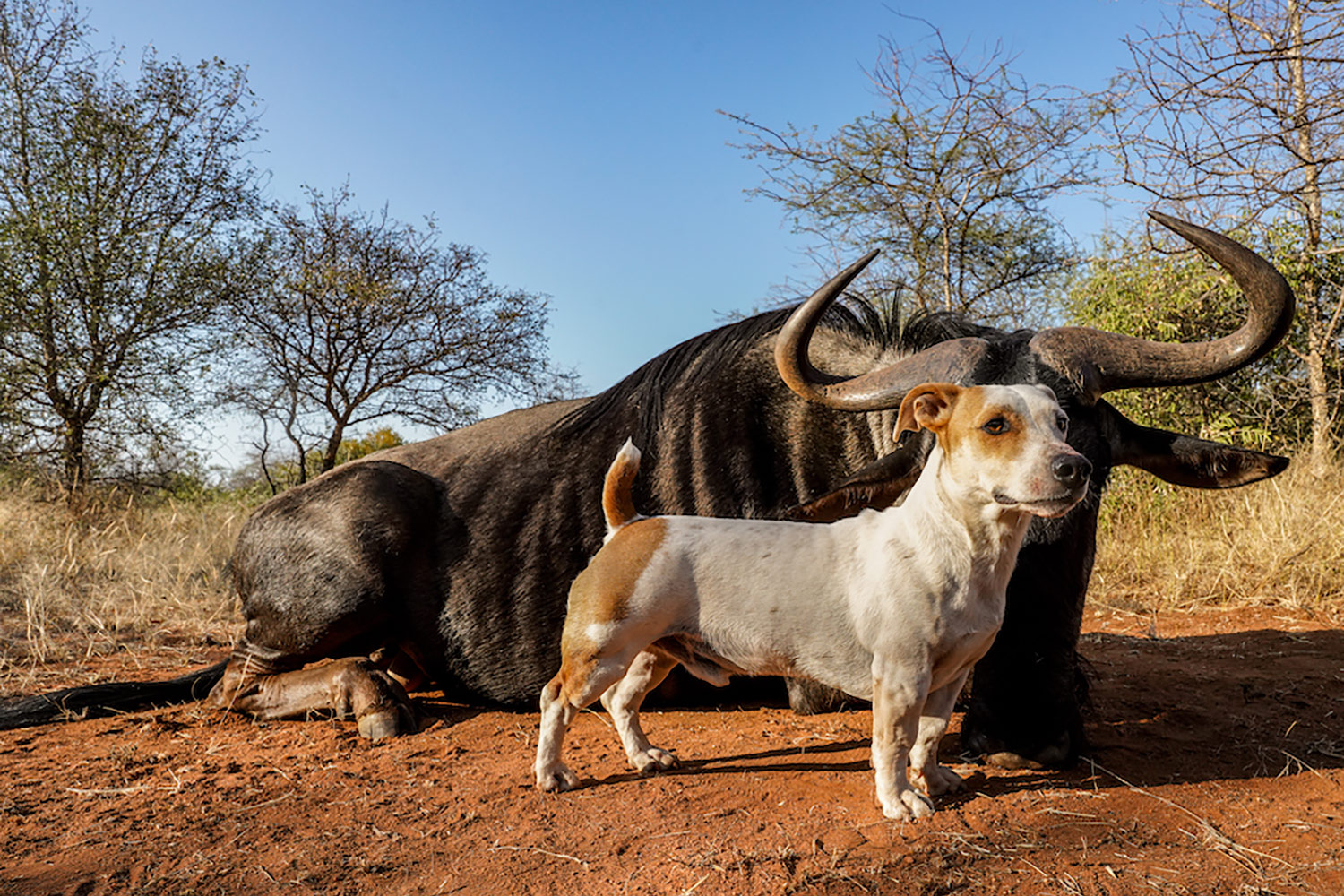
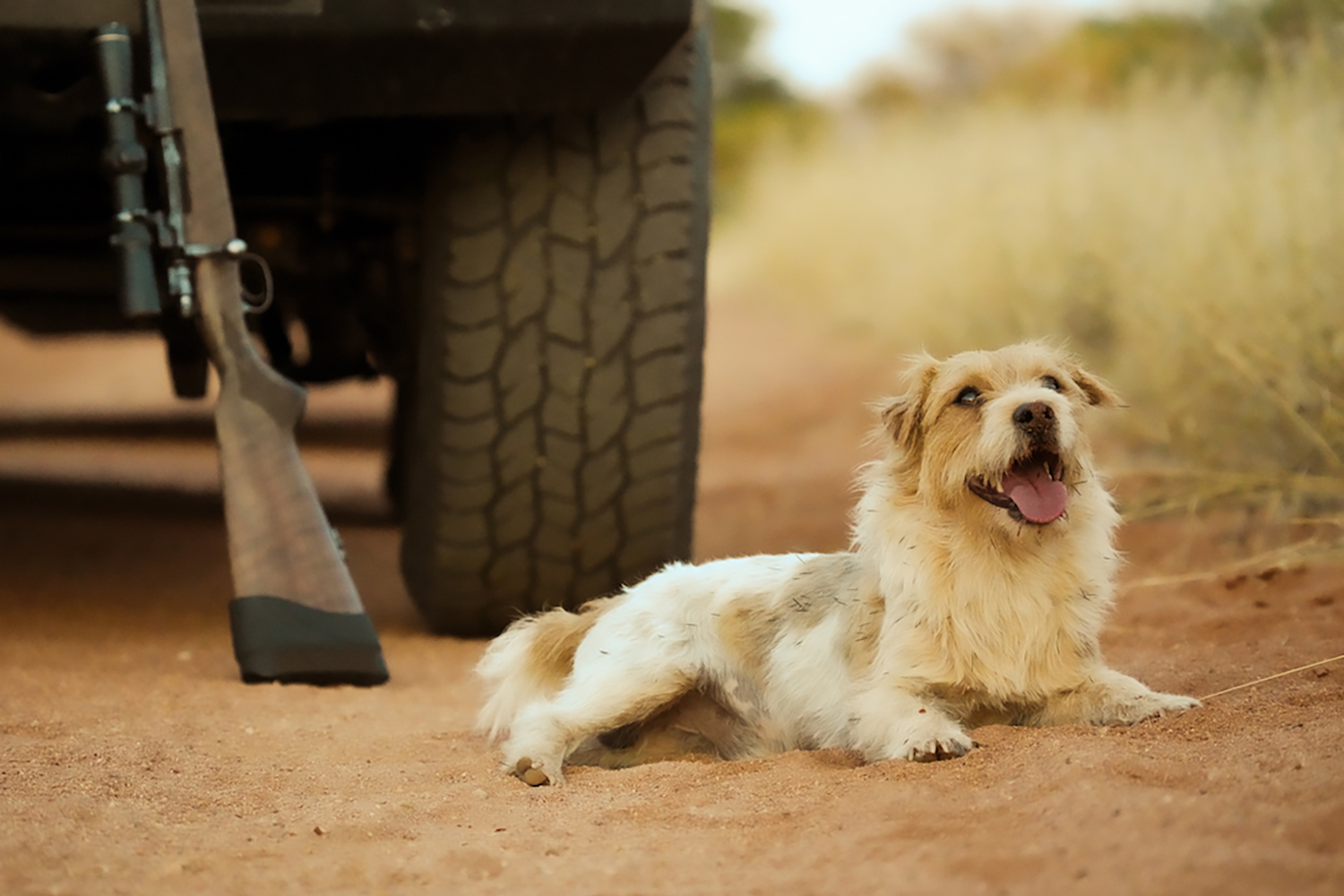
Tyler Sladen
When Bismark was younger, one of Human’s clients shot a big Nile crocodile and Bismark broke at the shot. That’s scary because you’re relying on a client to not shoot your dog, but you also don’t want the animal alive enough to kill your dog. Fortunately it was a good hit, but that’s just how it goes with terriers sometimes: You can’t proof a dog until you put him in situations like that. I saw lots of animals harvested in the three weeks I was there, and only now and then a dog would slip up and break at heel.
A standard track looked like this: As soon as the shot went off and the PH released his dog, the PH would run in and try to keep up with the animal. Those Jack Russells would be right there barking at it. Because we were hunting in such thick cover—50-yard shots were far in some cases—you couldn’t see the live dog 100 yards away, let alone the kudu that was just shot. It was helpful to hear barking so you could locate him.
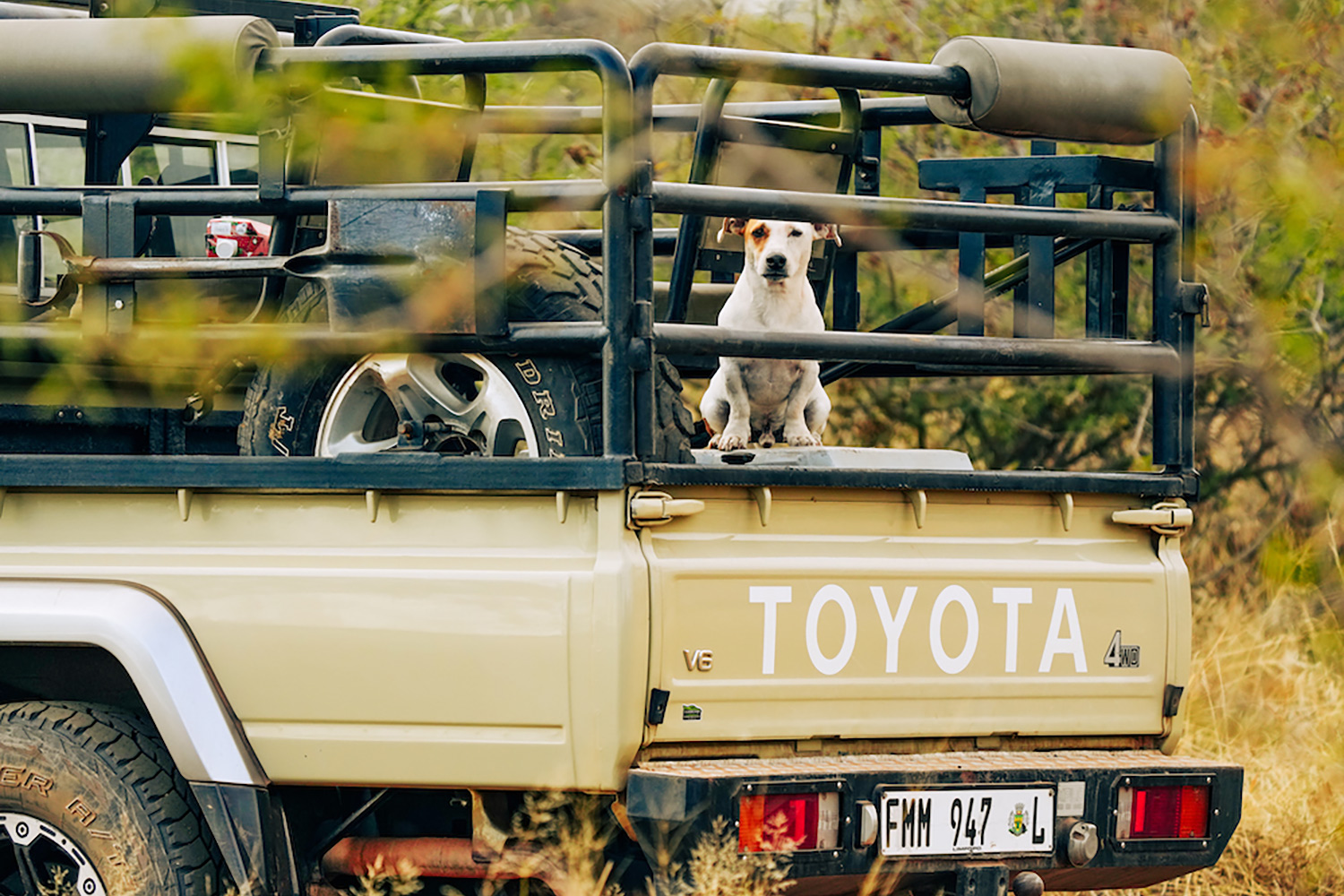

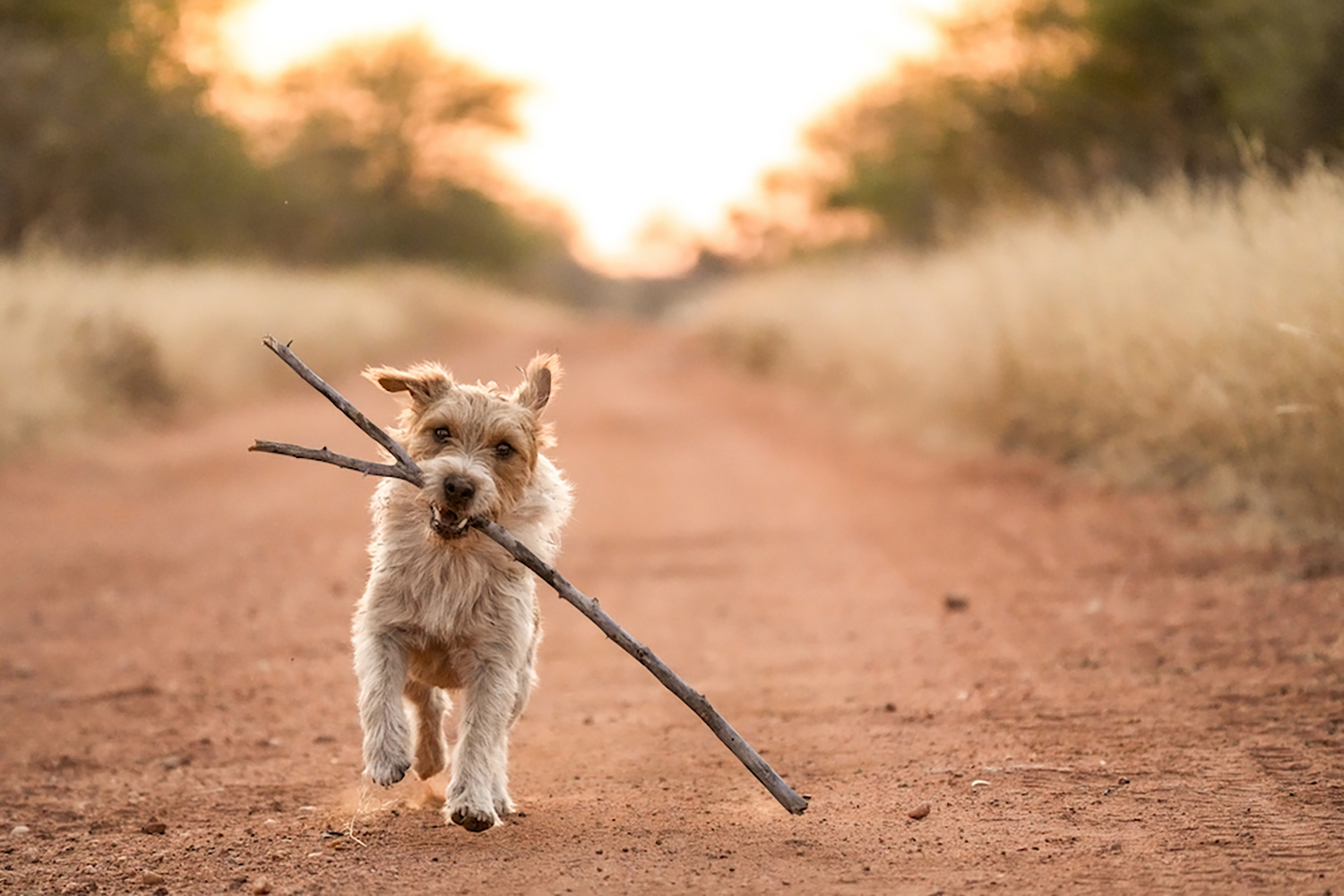
After a shot the dog was off to the races, and the human tracker was not far behind. And the trackers were incredible. I was skeptical at first. I’ve heard stories of how great they are, but I couldn’t help thinking: I’ve hunted my whole life. How good can these guys really be? What you don’t realize is those trackers hunt year-round except for the rainy season and they track lots of animals every day.
Better yet, the dogs don’t take away from the tracker’s job because often the tracker’s job isn’t just finding downed game—it’s finding live game. South Africans only use their blood dogs for finding animals that have been hit well.
Fortunately, the Cape buffalo was well hit—several times. In the end, the bull slid to a stop just yards from our feet, with Bismark barking on its back.
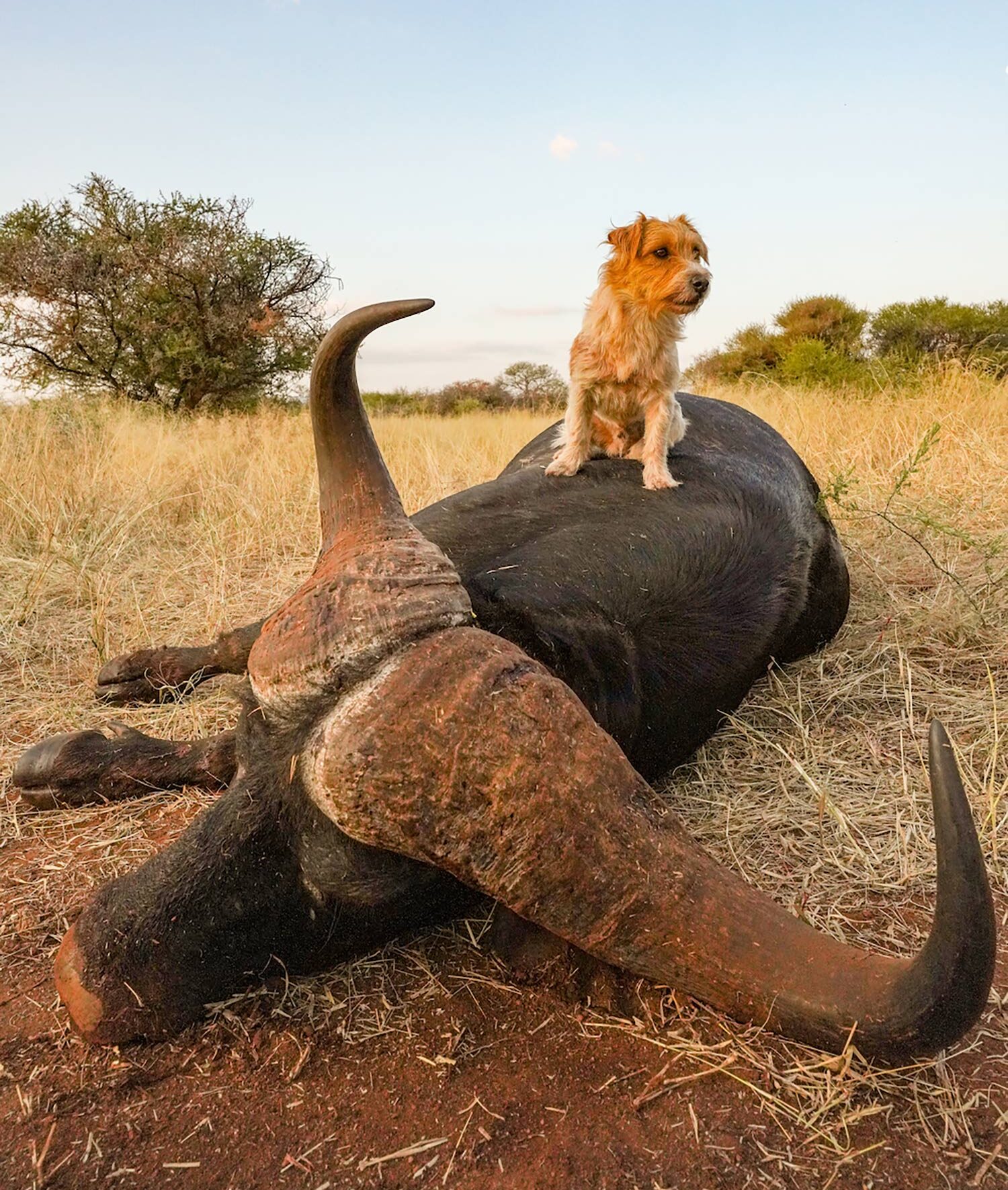
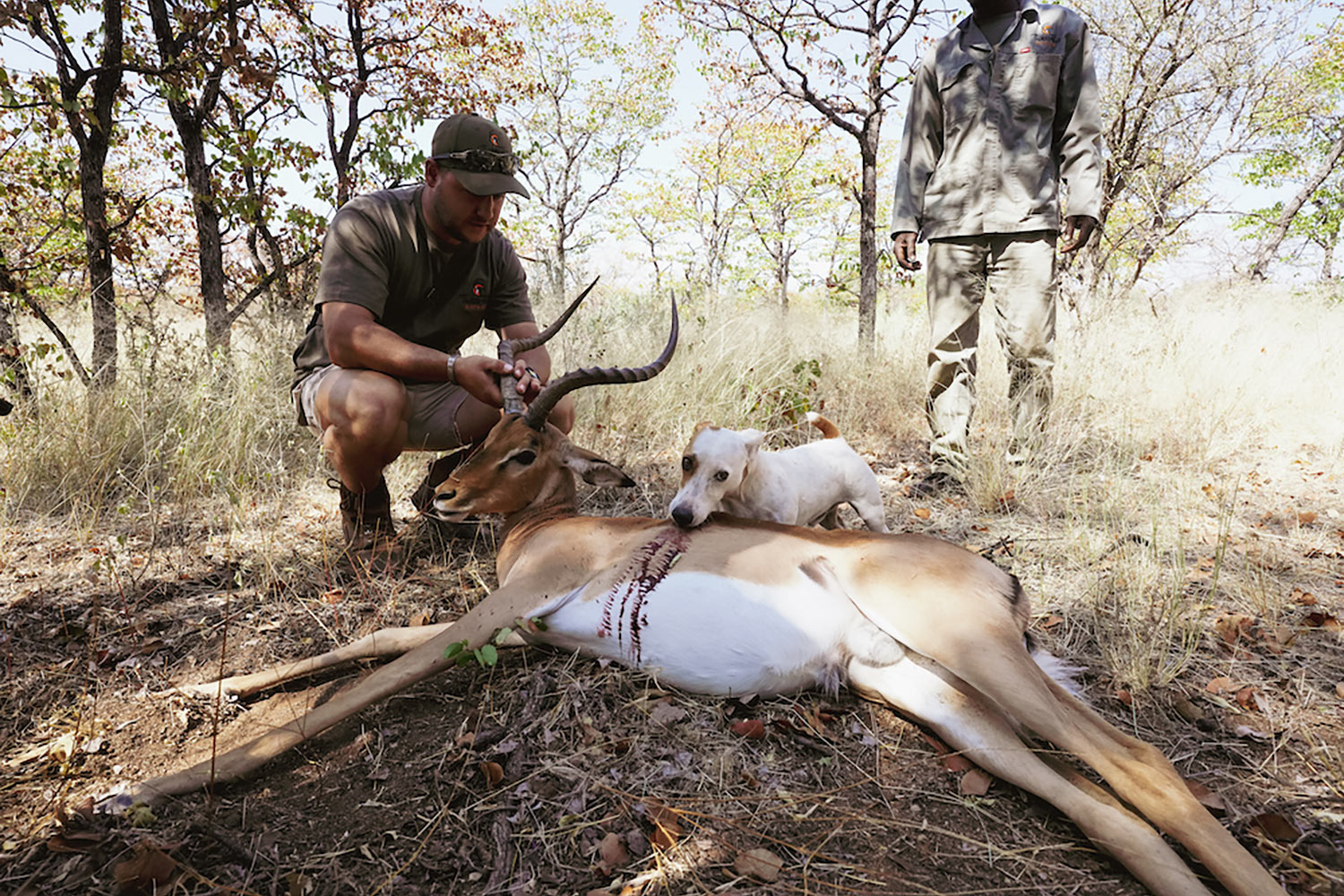

Read more OL+ stories.
